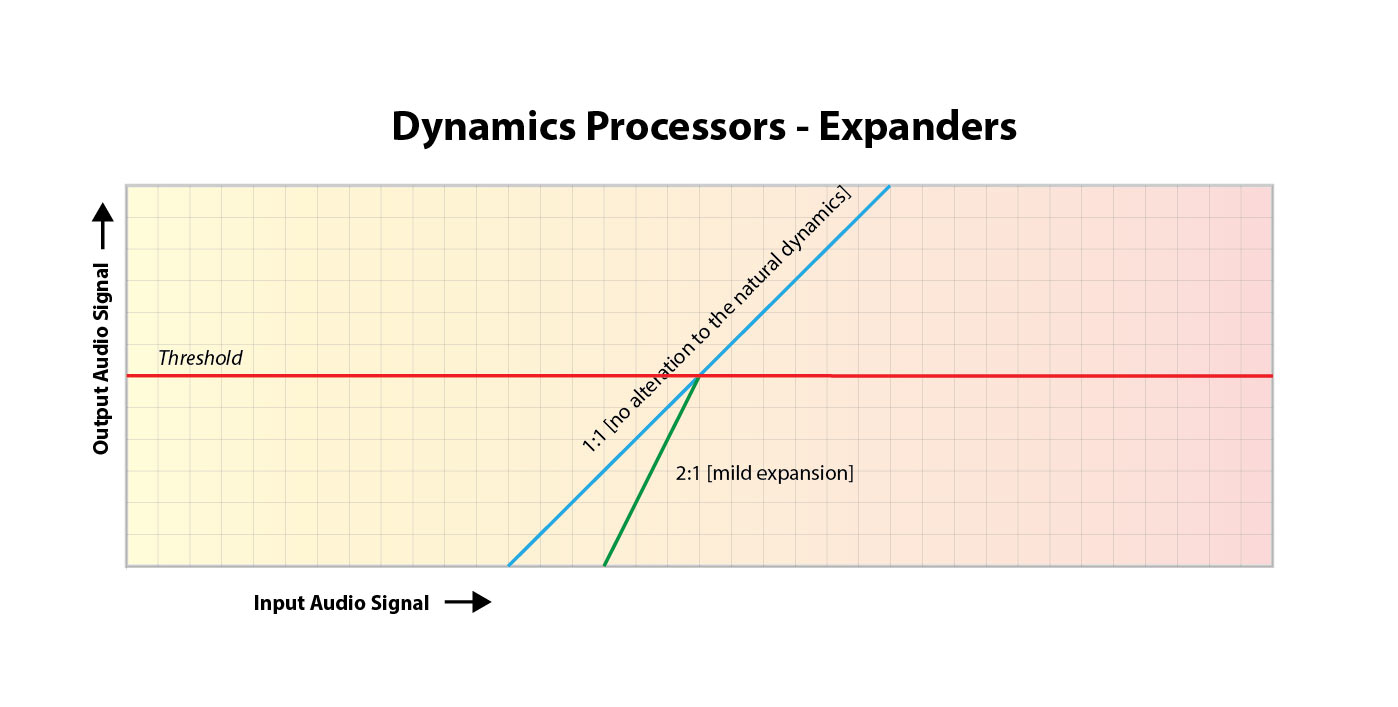Expanding Dynamic Range
Modifying musical dynamics (the variations in loudness inherent in performances of music by humans) with technology is very easy to do. In the days prior to electrical recordings, simply having the loud instruments further away from the recording horn could bring them into balance. These methods of making live recording are still widely used by audiophile labels all around the globe.
With the arrival of electrical recording and amplification, engineers could turn a knob to increase of decrease the amplitude of audio signals. The degree to which levels can be adjusted in today’s PCM based digital workstations is astounding. Engineers can direct a processor to apply to only a specific frequency range or as a result of an external trigger (say another track with a vocal or other solo instrument). This is called a side chain compressor and is often used to automatically reduce the amplitude of a music track under an announcer.
We been talking about simple compression and limiting in the last couple days. Compression means that we are narrowing the overall dynamic range of a recording. The results are a “punchier” track that plays better through the radio in your car. Compression and limiting have just about killed the dynamics of actual performed music. The loudness wars are alive and well. But what if there was a complementary process that could reverse the ill effects of over zealous master engineers? Imagine we lived in a world that valued accurate dynamics and pushed back against plateau dynamic contours. Welcome to that world…maybe.
Introducing dynamic expanders. Yes, there are digital (and analog) processors that can increase the dynamic range of a recording. Simply put…they do everything that a compressor does except in reverse. Take a look at the diagram below:
Figure 1 – A graph showing the effect of dynamic expansion. Signals BELOW the threshold are reduced in amplitude by a specific ratio. [Click to enlarge]
So a source signal below the threshold is reduced in amplitude rather than signals above the threshold as in the normal downward compressor model. This results in the quieter moments being made quieter thus increasing the dynamic range. It would seem that we have a solution to the “loudness wars”, right? All you need to do is dial in the amount of dynamic range that you want and presto, we can achieve the real world dynamics of an acoustic performance. Sadly, no. It doesn’t work this way.
The problem is the “granularity” or number of time slices that are affected by the first round of dynamics modification…the compressor or other DSP inspired dynamics removal tools used in the mastering studio. Once the “amplitude plateau” has been achieved…the music waveform flattened…all an expander can do is tilt the new contour back towards what it was. But it can only do that to the already dynamically damaged file.
If we could only emulate the granular nature of the Dolby SR analog tape noise reduction system that tracked exactly what was done on the compression side and then uncompressed or “expanded” each moment back to the original level. It is possible to handle mastering this way…but no one is interested in getting real world dynamics back into audio recordings. Louder is perceived as better and we’re stuck with it.
Expanders are not commonly used in audio production.



Could one encode the mastering so a domestic decoder could render the mix dynamics?
This is what I’m advocating.
Wouldn’t it be easier to avoid compression in the first place, then!
Bingo!
If the compression was multi-banded, or in any way frequency-dependent, you would have to know the compression settings to be able to ‘decode’ it. Any ‘universal’ expansion settings would be sure to fail.
Expansion is not going to work to restore the dynamics of a recording that has too much audio compression.
As much as I want this to happen, it just isn’t on the radar, I suspect.
What’s missing in recorded music is short tern/ transient dynamics. If you listen closely to recordings they sound “soft”. All the impact and transient peaks are compressed. Percussive sounds are muted and have lost their impact. This makes recorded music sound dead in comparison to live music.